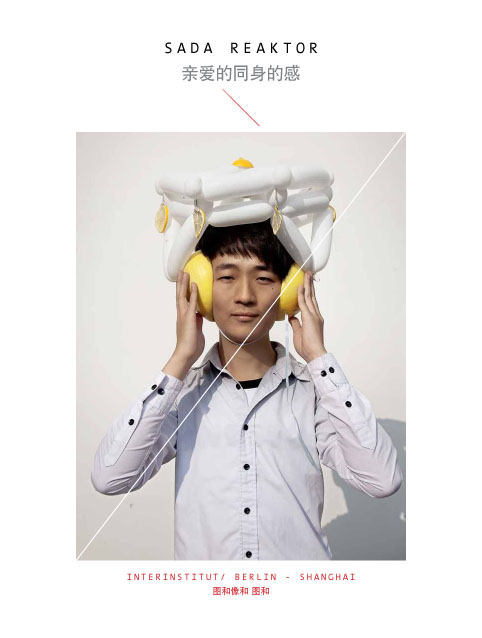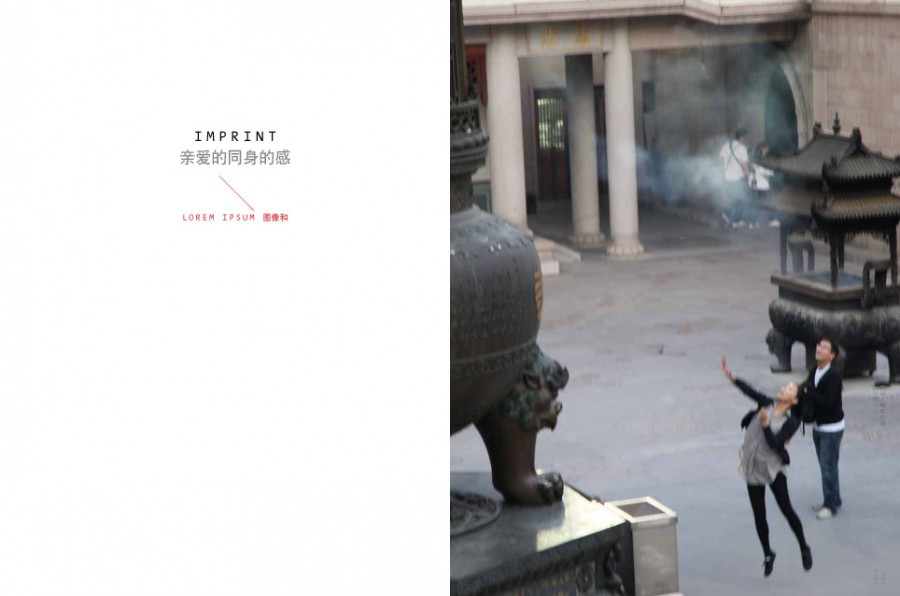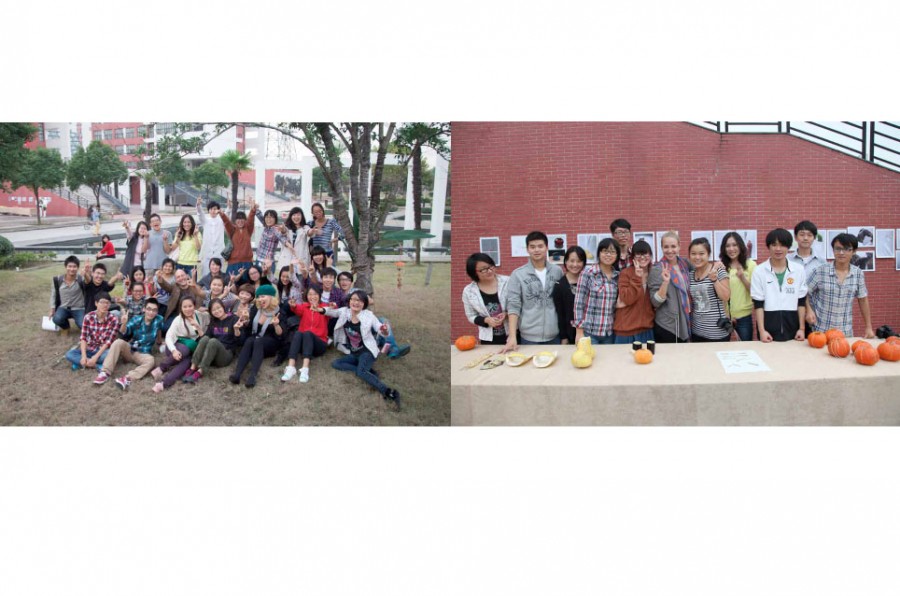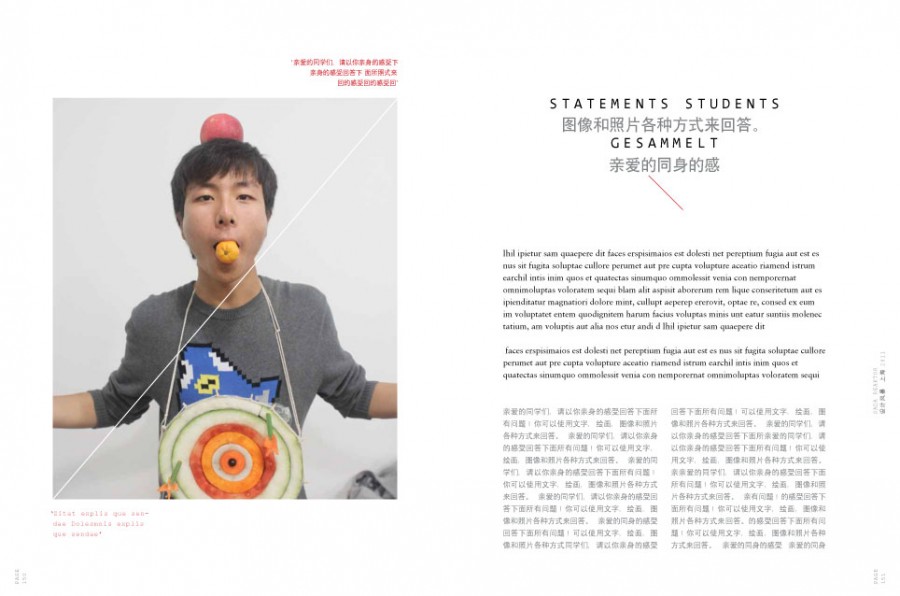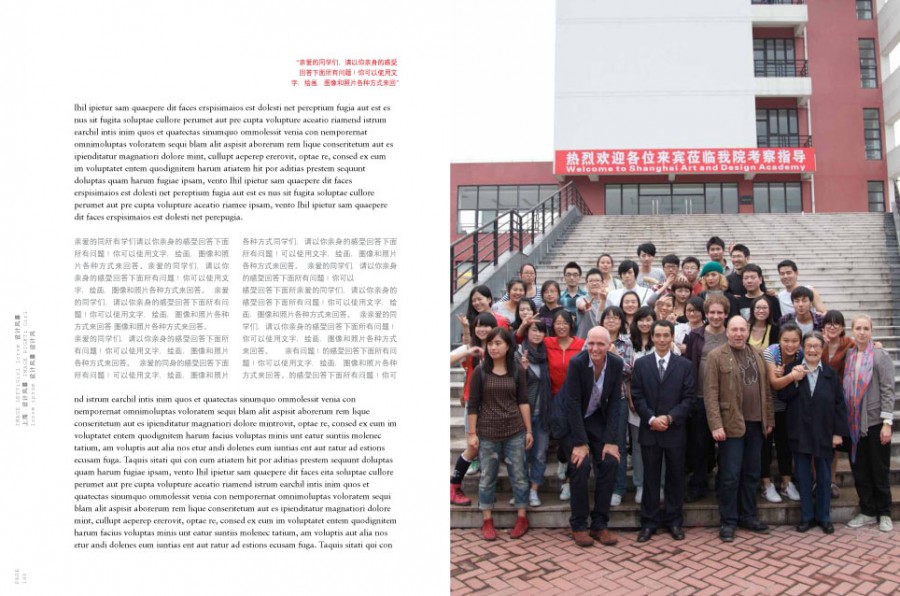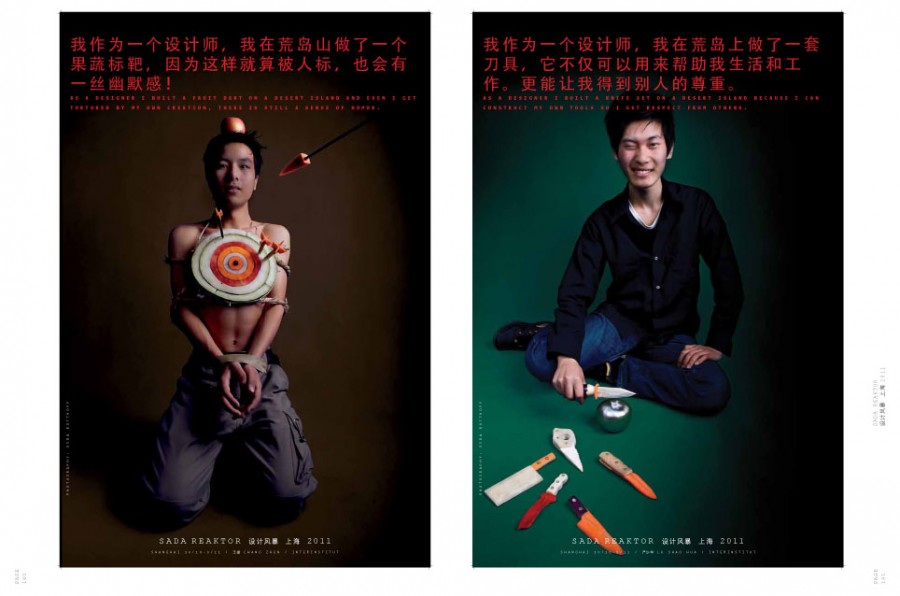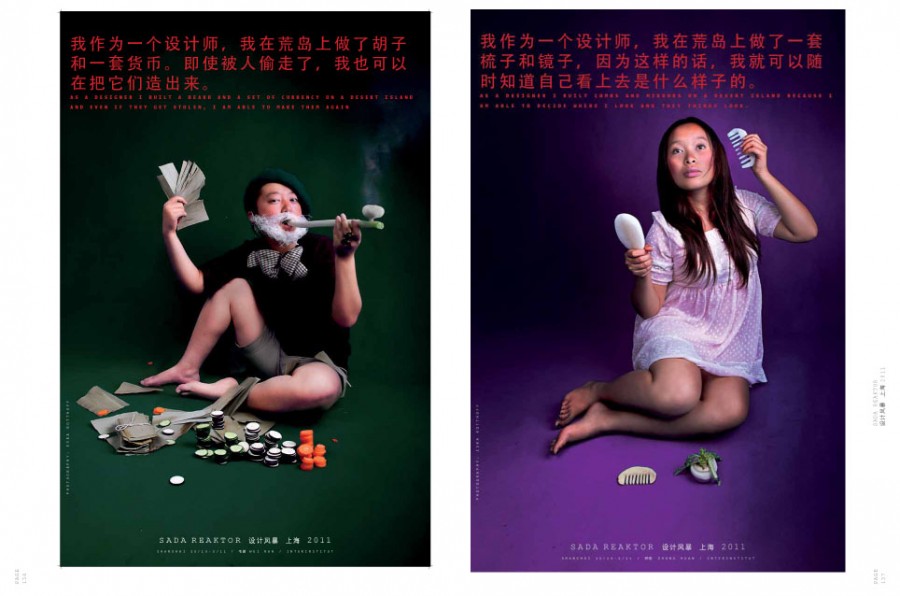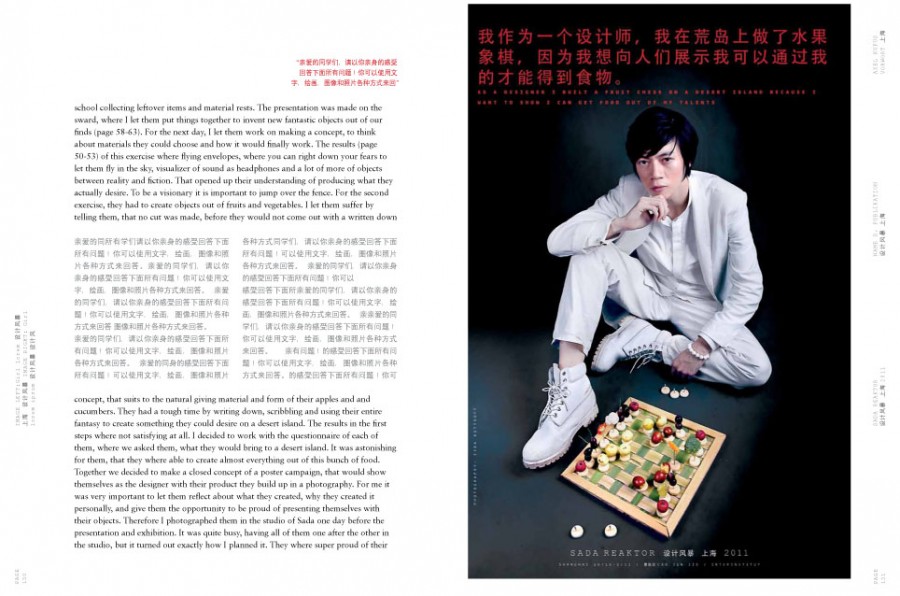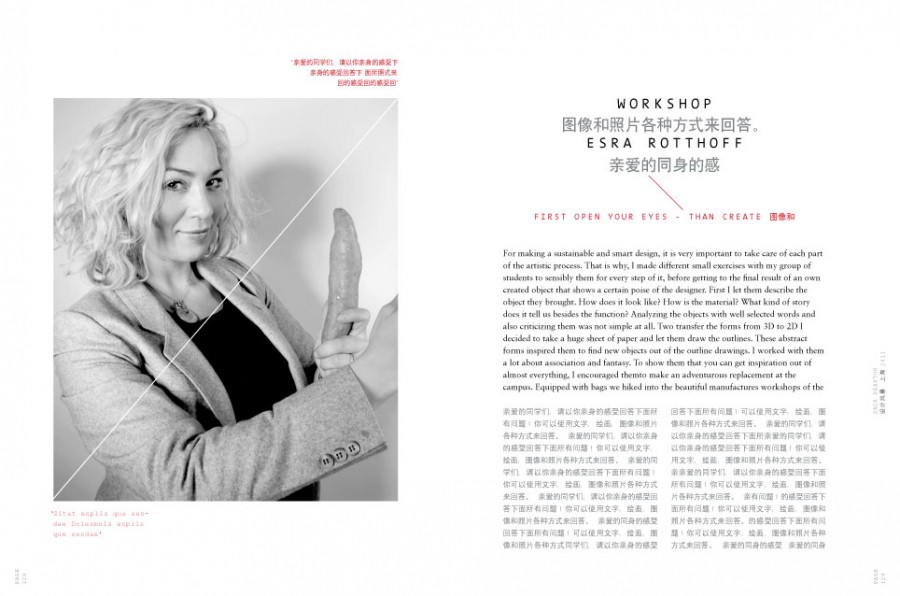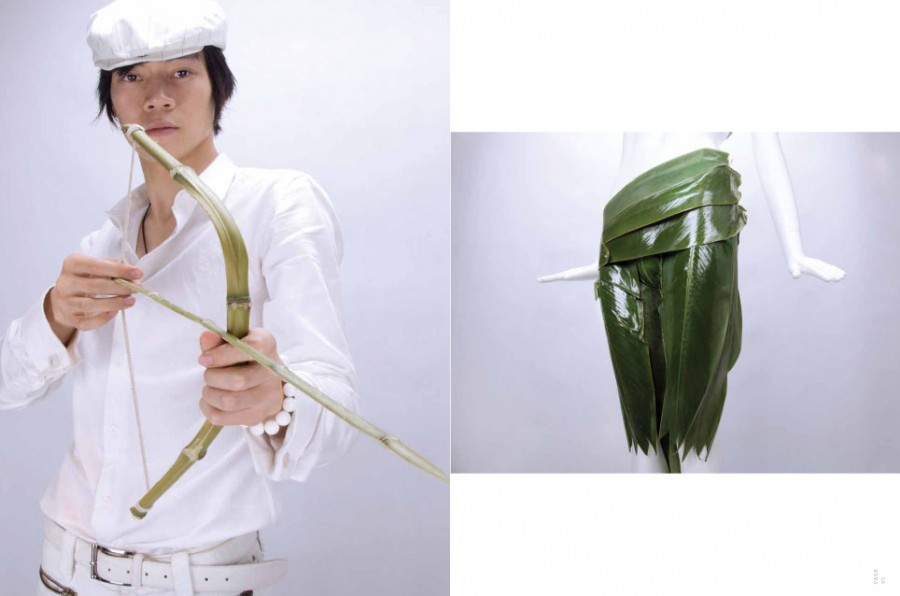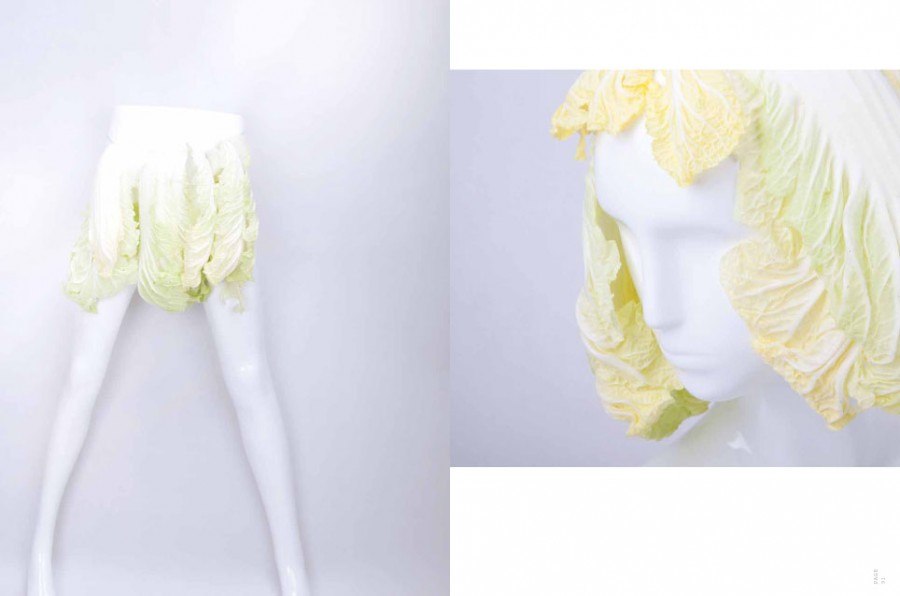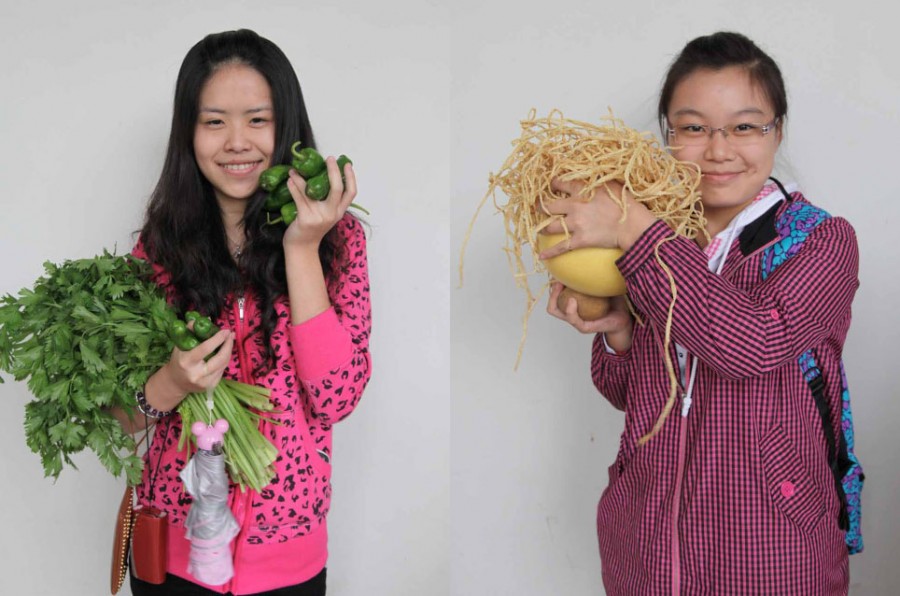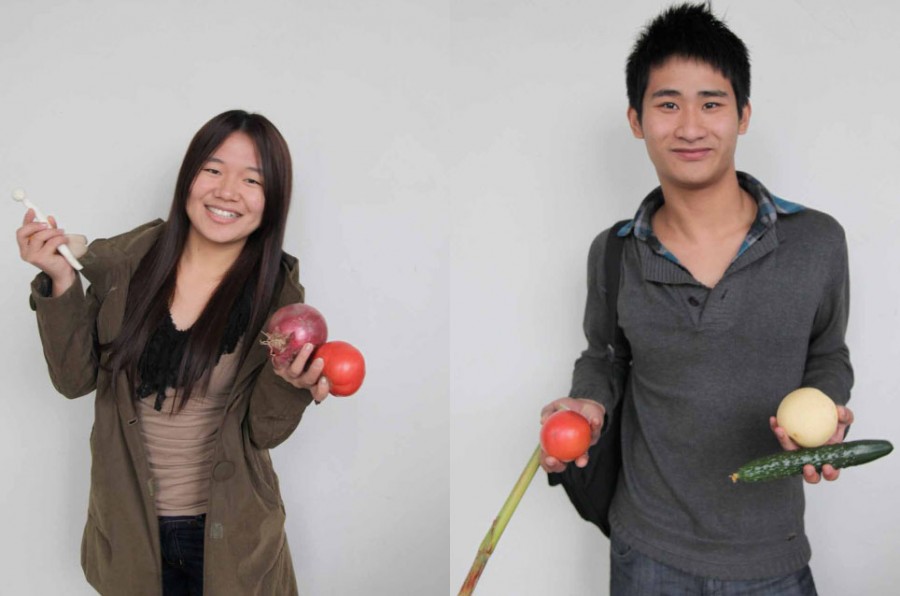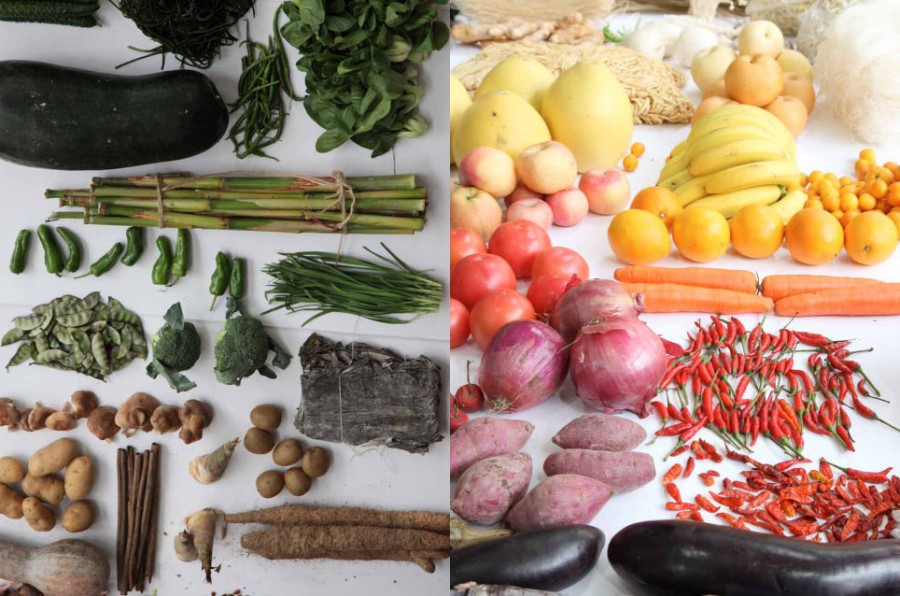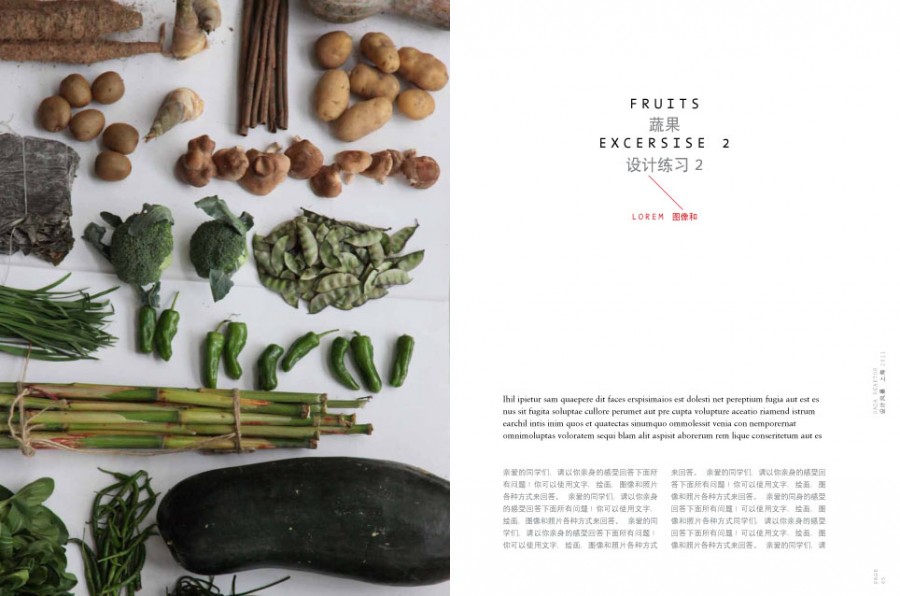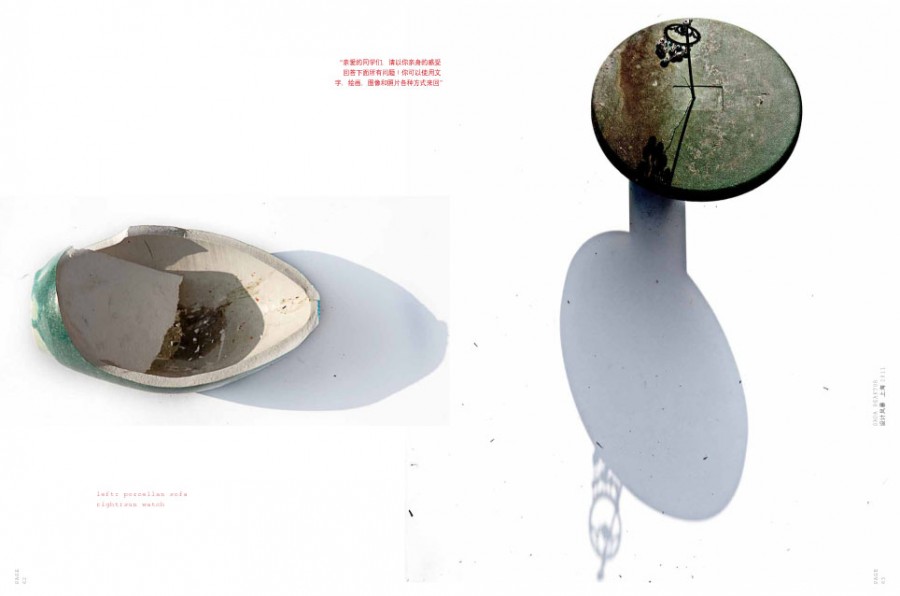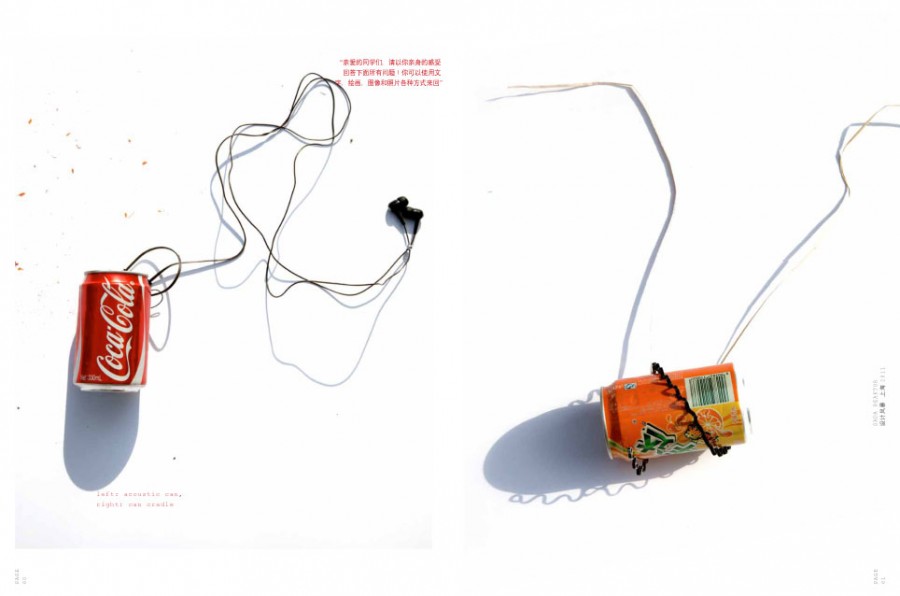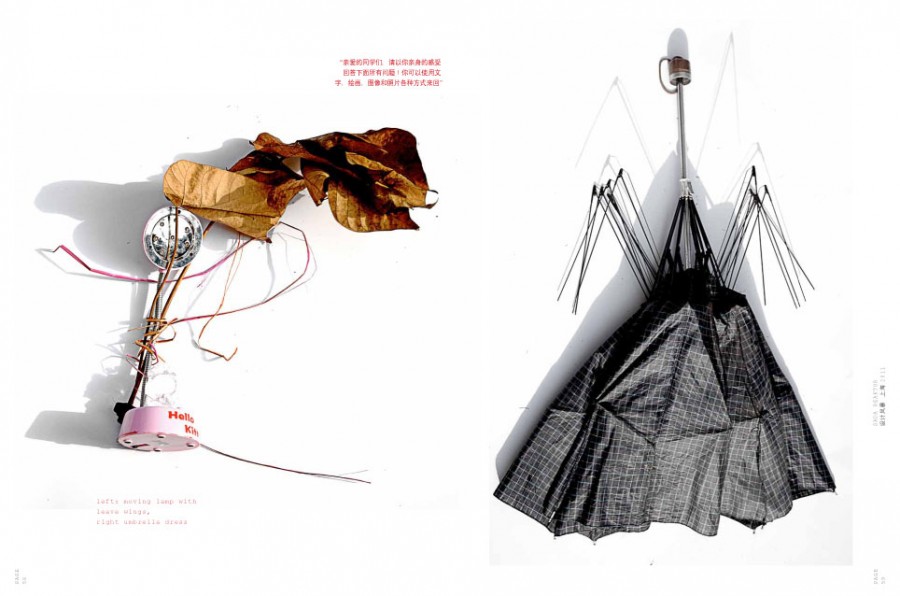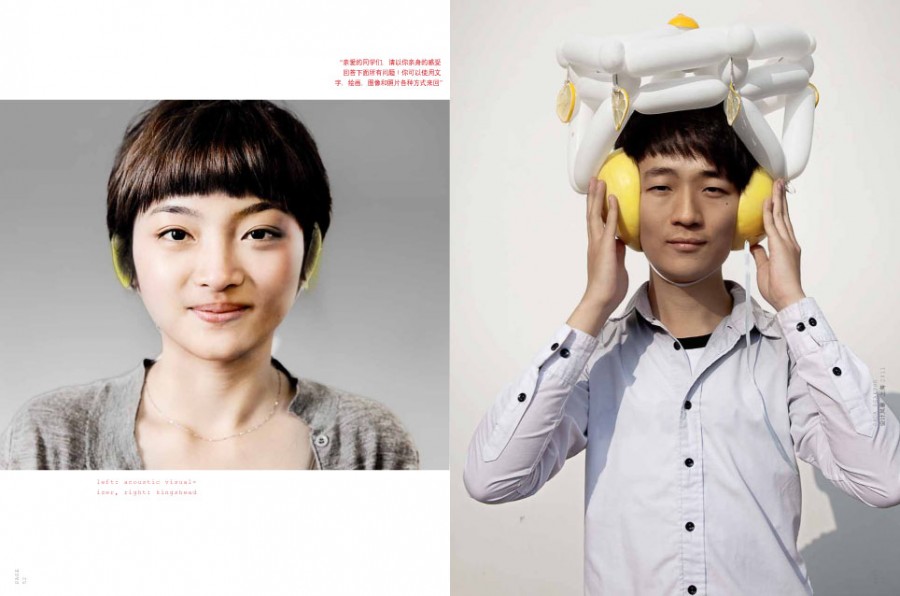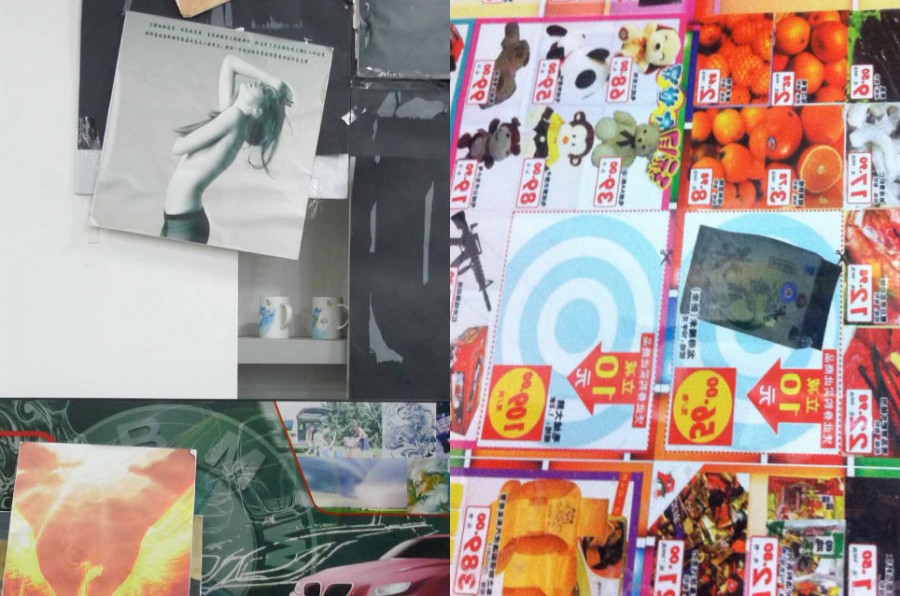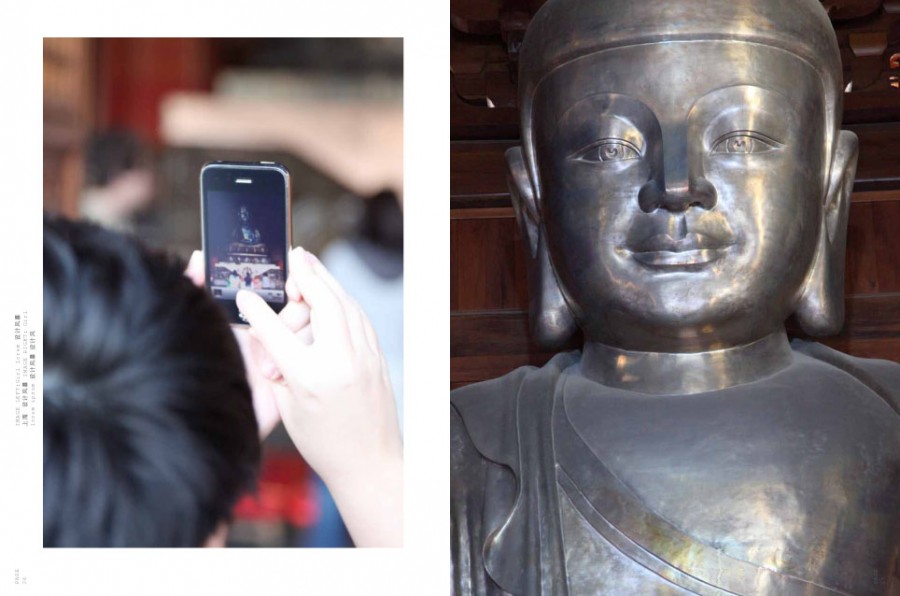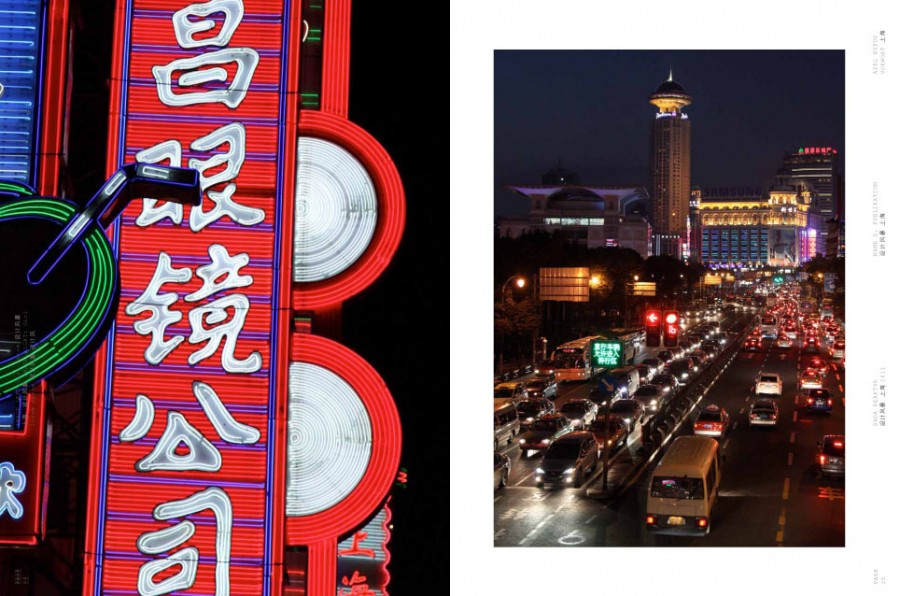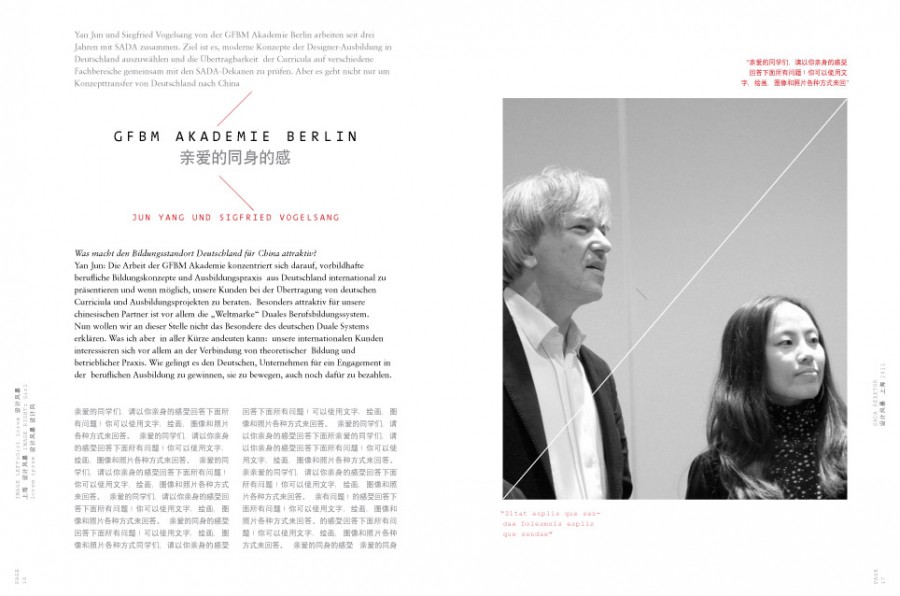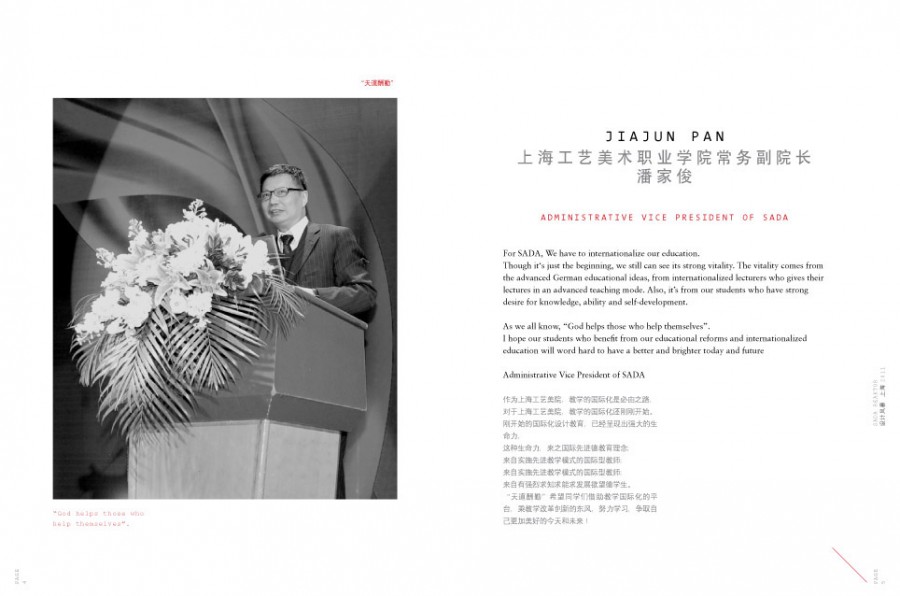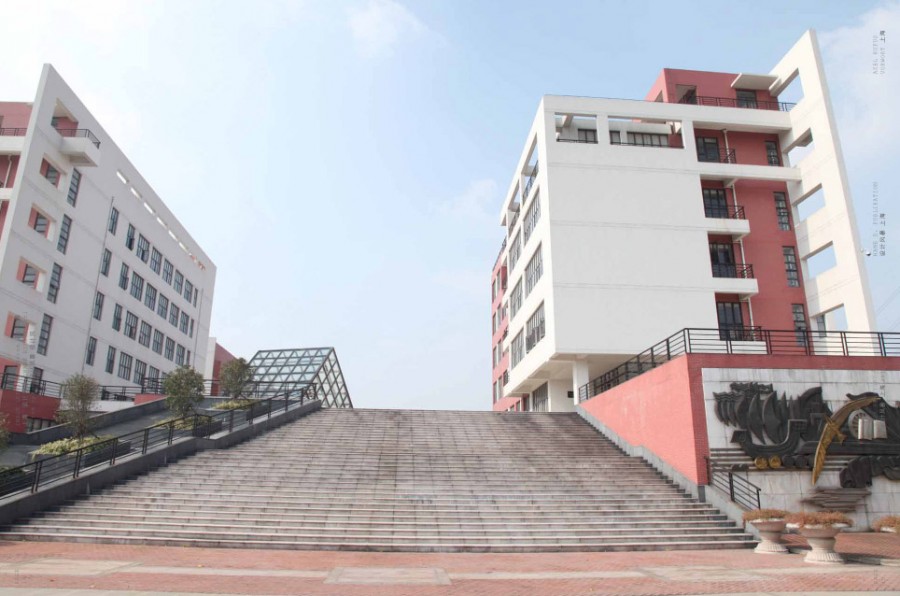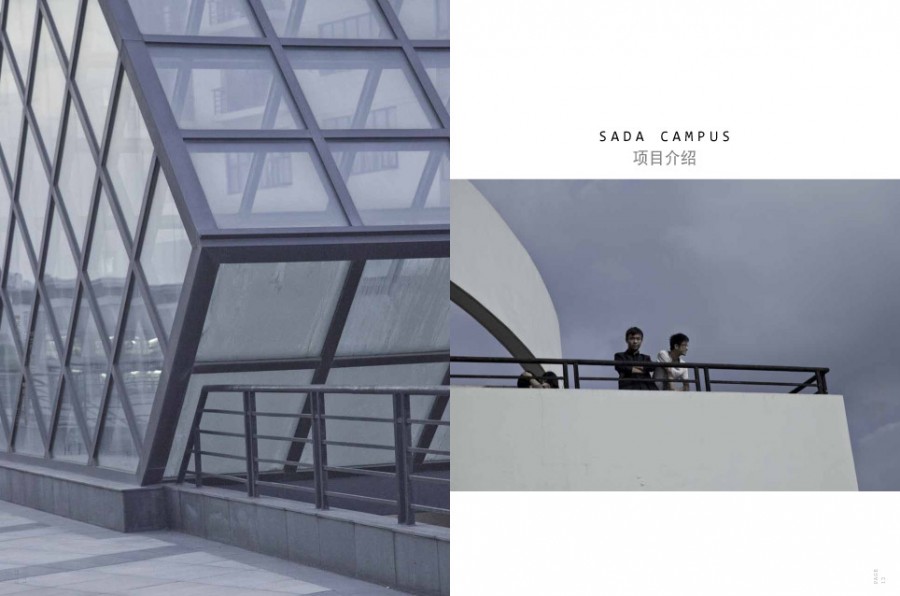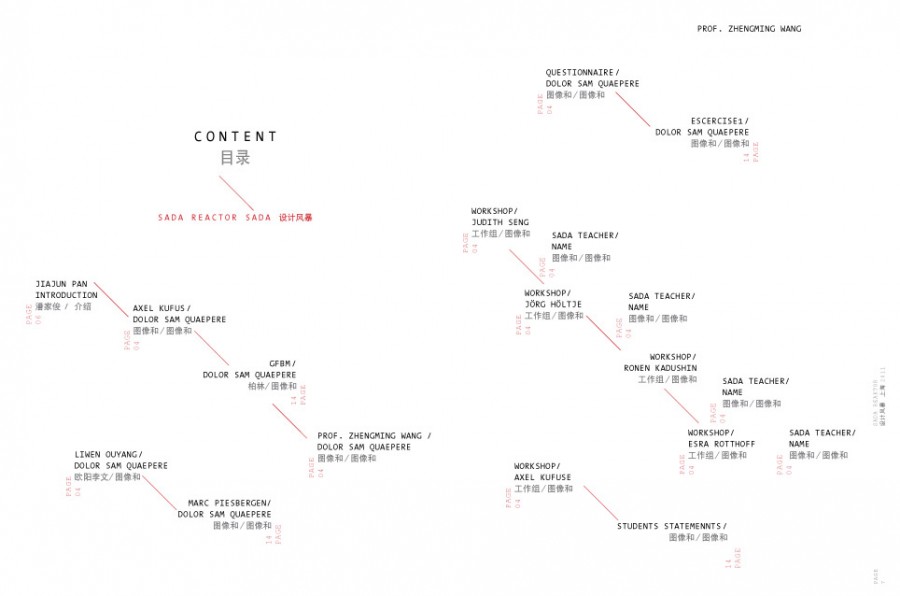WORKSHOP CONCEPT
First open your eyes - then create –图像和
Esra Rotthoff was invited to hold a series of creative design workshops in China at the Shanghai Art and Design Academy (SADA). The objective was to create a space for knowledge transfer and capacity building - exploring analytical, experimental, and reflective approaches, encouraging creative solutions to existing and emerging problems. She utilized a variety of unorthodox methodologies to bring students' awareness to their creative problem-solving skills.
Esra describes the process:
“In order to create sustainable and smart design, attention must be paid to each part of the artistic process. This is why I made various exercises with my students to increase their awareness for the importance of each step. The goal was to guide the workshop participants to create objects that were previously unimagined or unimaginable, and then to portray them visually with the objects. With this later step I also wanted to impart to the students a sense of pride in their creations and know that the talent to create is something beautiful that makes us see the world in a different way. We are actually able to change a lot through small things.
Firstly, I asked them to bring an object of their choice to analyze and discuss. They were asked to describe the object in detail. How does it look? What kind of material is it made of? What story does it tell us besides its function? Analyzing the objects with carefully-selected words – and criticizing them as well – was anything but simple.
Then, to transfer the forms from 3D to 2D, I took a huge sheet of paper and had students draw the outlines of their objects, which inspired them to conceive new objects from these outline drawings.
We worked a great deal on themes of association and fantasy. I wanted to show them that inspiration can come from almost everything. Like scientists with specimen bags, we took an adventurous field trip across campus; we hiked into the school's beautiful manufacturing workshops, collecting leftover items and materials. In a nearby meadow we spread out our finds, assembling them in ways that invented new, fantastic objects.
In a second exercise, the participants were tasked with creating usable objects out of fruit and vegetables. Yet there was a catch: the participants had to 1) imagine they were stranded on a deserted island, 2) make something that would be useful there; and 3) not cut or alter the original organic form of the fruit or vegetable - be it apple, cucumber, tomato, or otherwise – beyond recognition. This proved exceedingly difficult, and it took days before the participants started scribbling down rudimentary designs. Ultimately, though, by using various methods of sussing out their creative imaginations, the participants came up with wildly differing and ingenious inventions from their piles of produce.
In line with my usual working methods, I made a closed-concept poster campaign that featured the designers alongside their creations. This was an opportunity for them to reflect on what they had created, why they created it personally, and to proudly present their objects.
The day before the exhibition I photographed them in the SADA studio. I was thrilled to see how the pride and ownership in their objects shone through in the photos. Matching the creator's face to his or her creation proved another important step in the process: they were finally striking a pose with the face of creator and attitude of designer.
When we presented the posters to the whole university, even the normally shy students read their statements and discussed the workshop experience. Immediately after the workshop, I saw the students already taking their posters down from where they hung – intending to hang them on the walls of their rooms. There they can continue being proud of what they created and see themselves as superstar designers.
I hope the SADA students keep working with the process we laid out: First open your eyes, then create -图像和
Thank you to all students and staff of SADA who made all this possible."
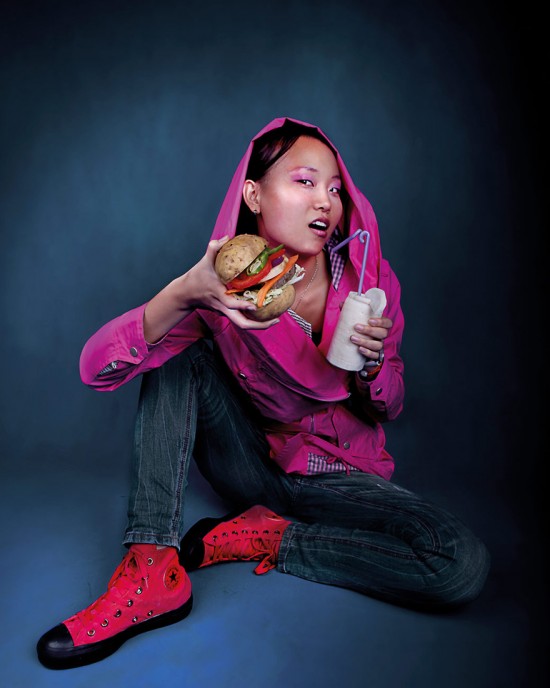
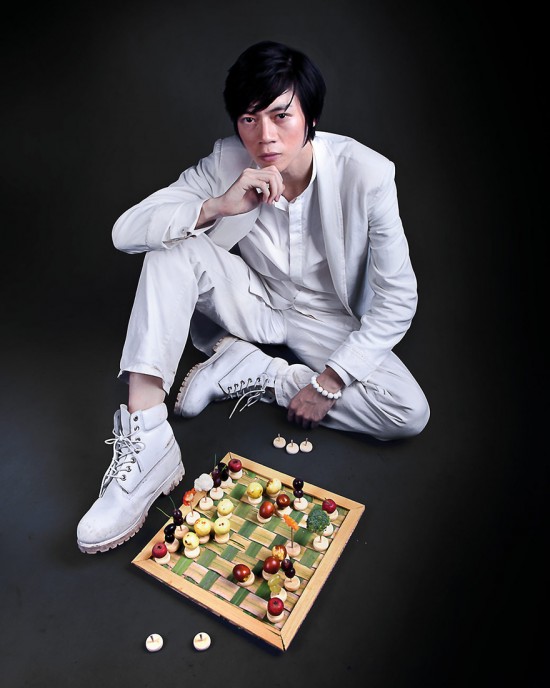
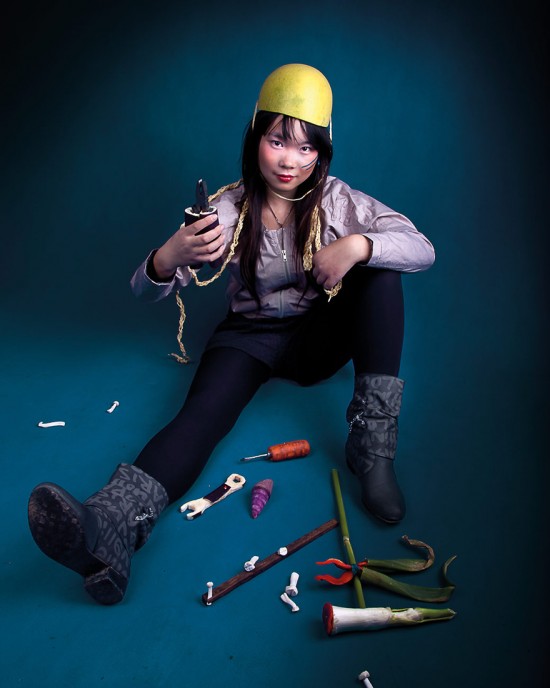
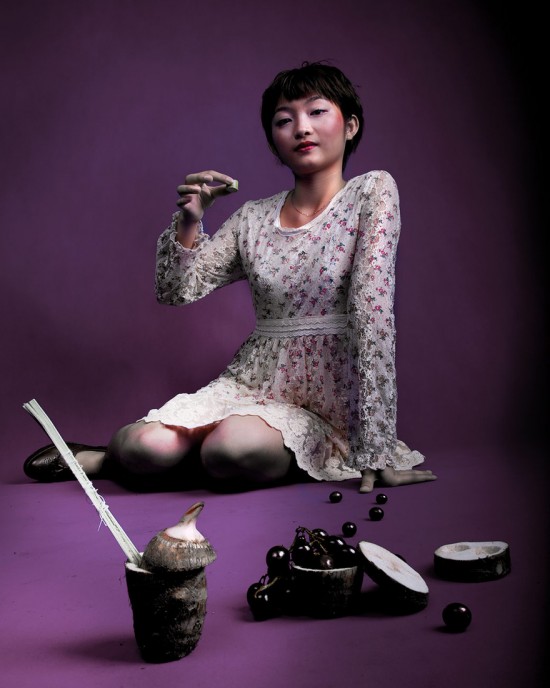
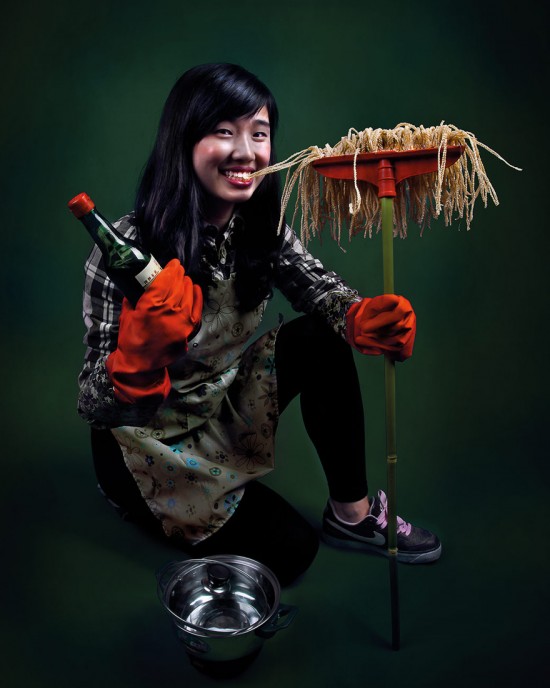
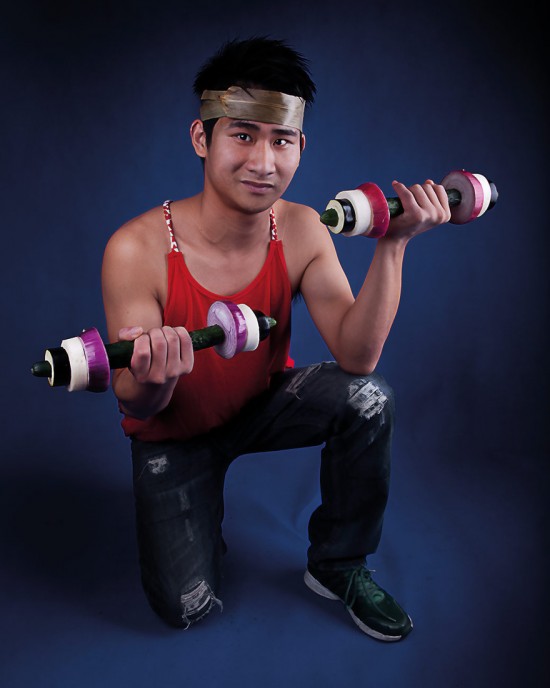

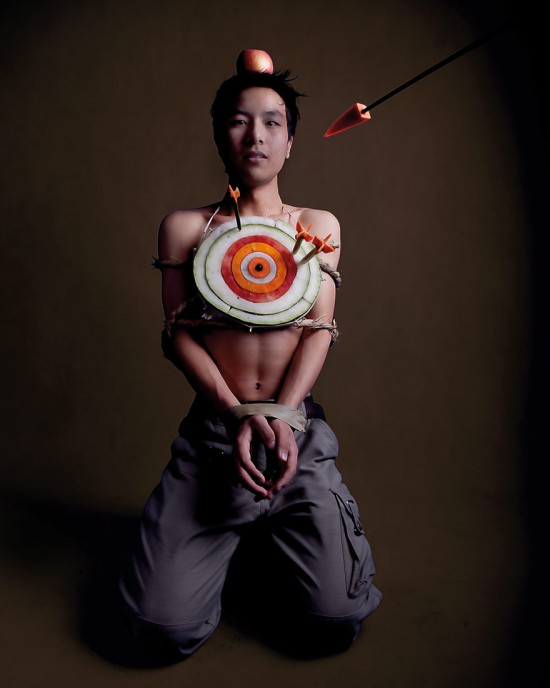
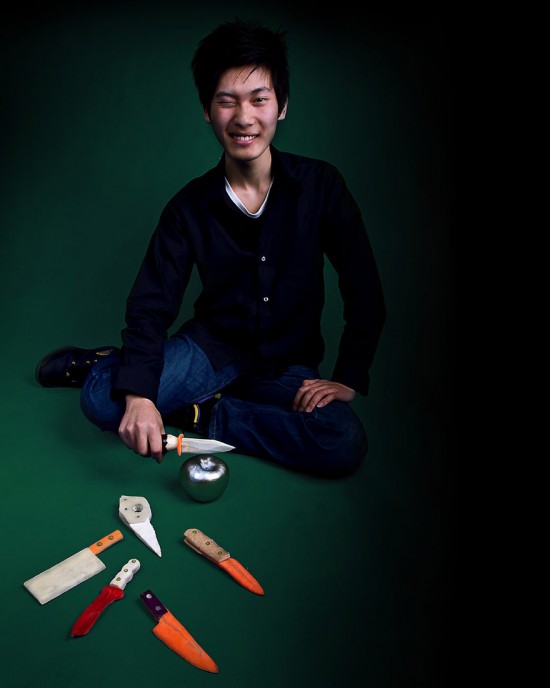

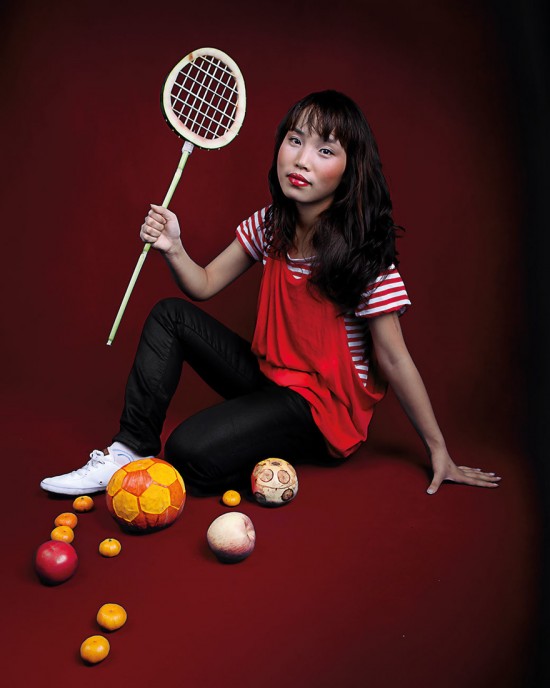
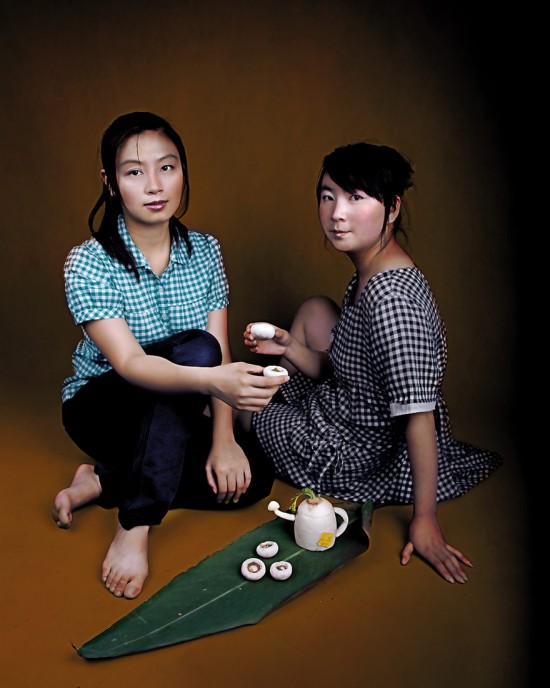
Publication: SADA REAKTOR
After these successful workshops, SADA and Interinstitut asked me to make the concept, art direction, and structure for the following publication.
